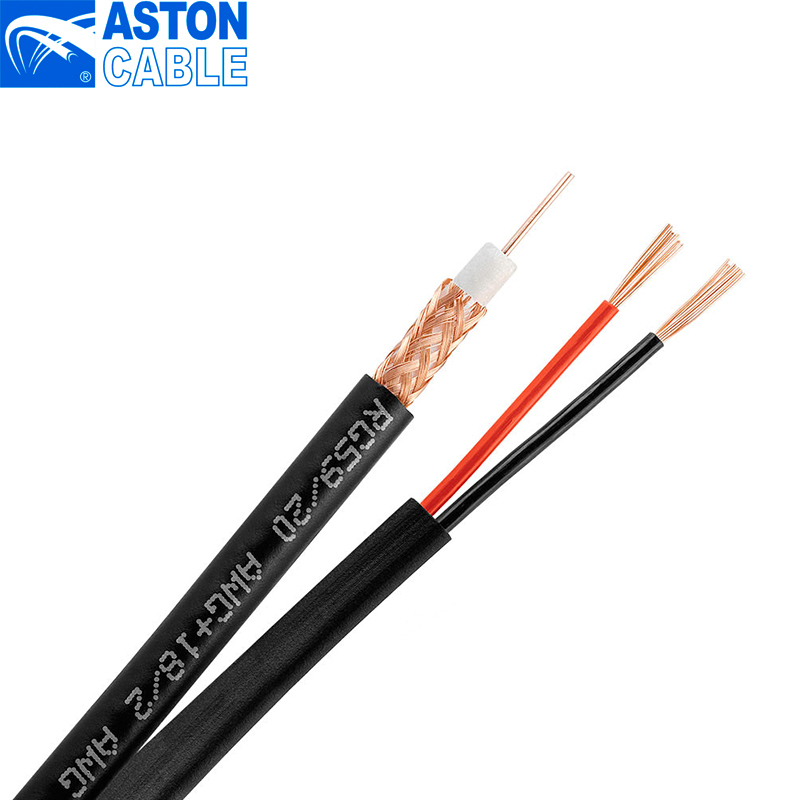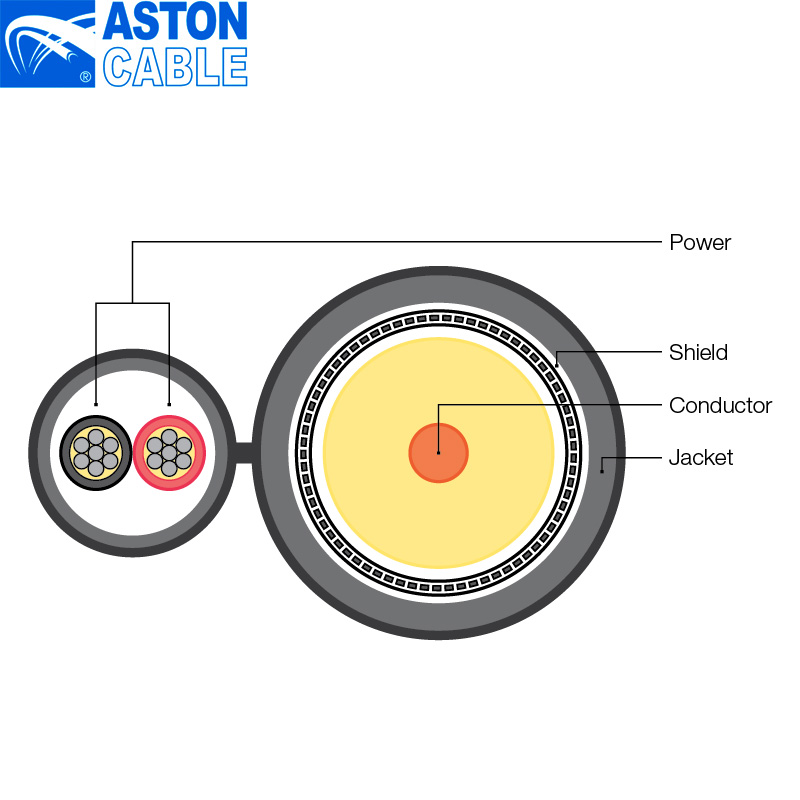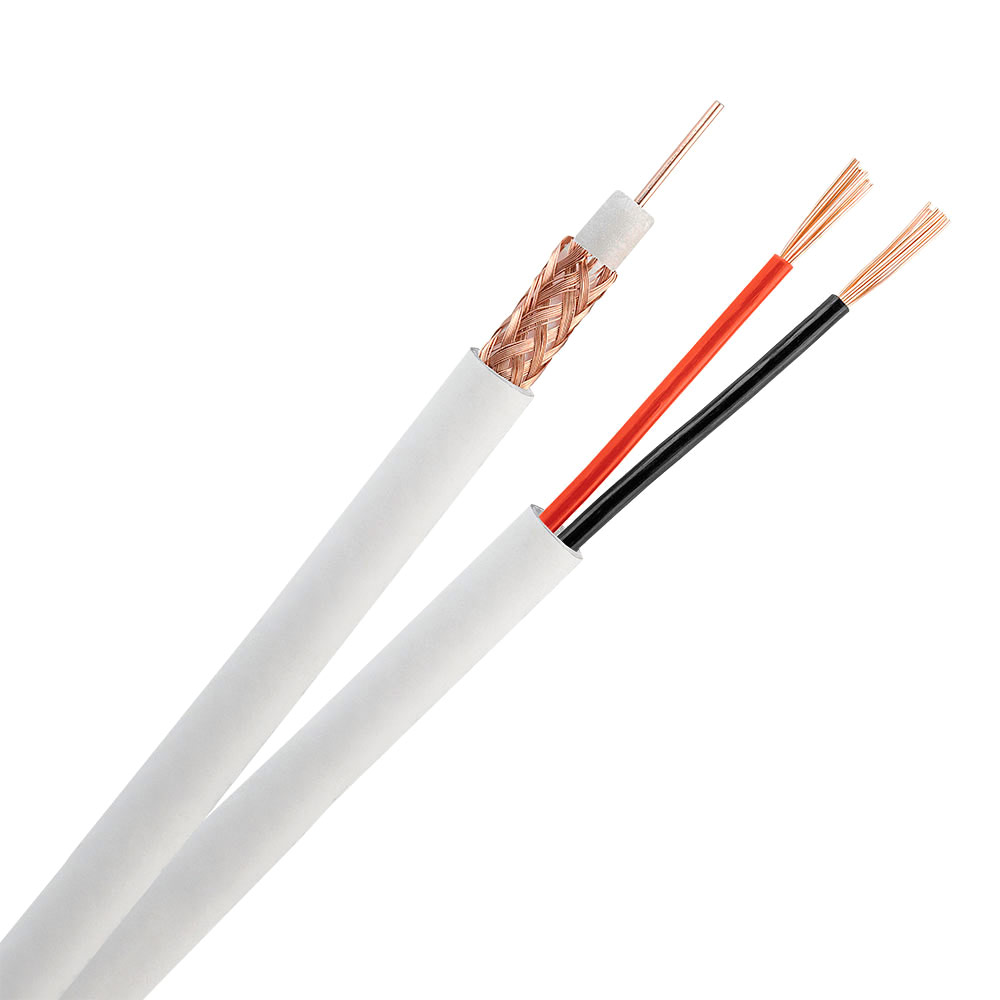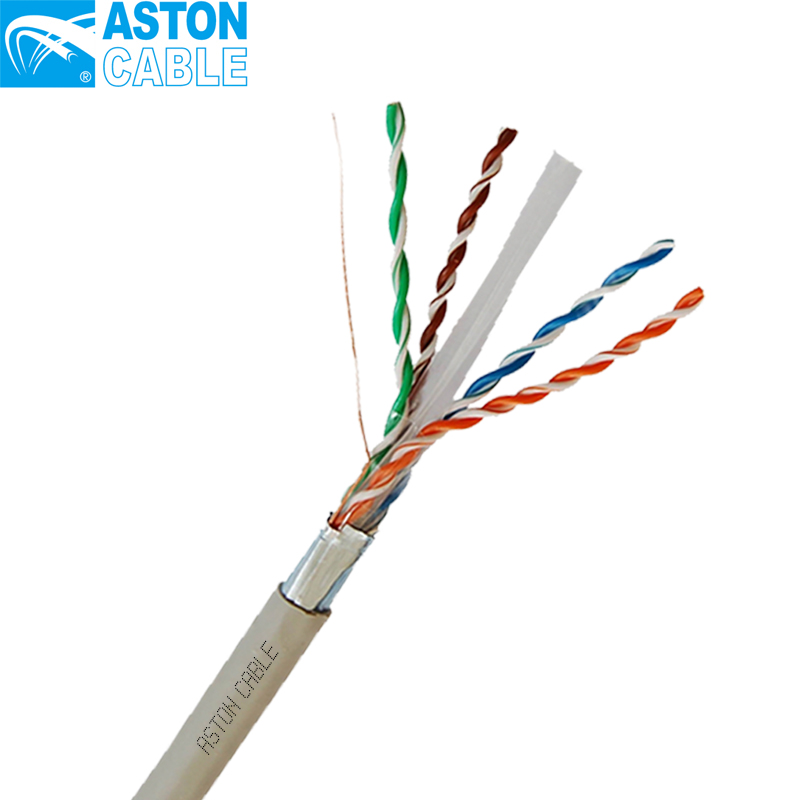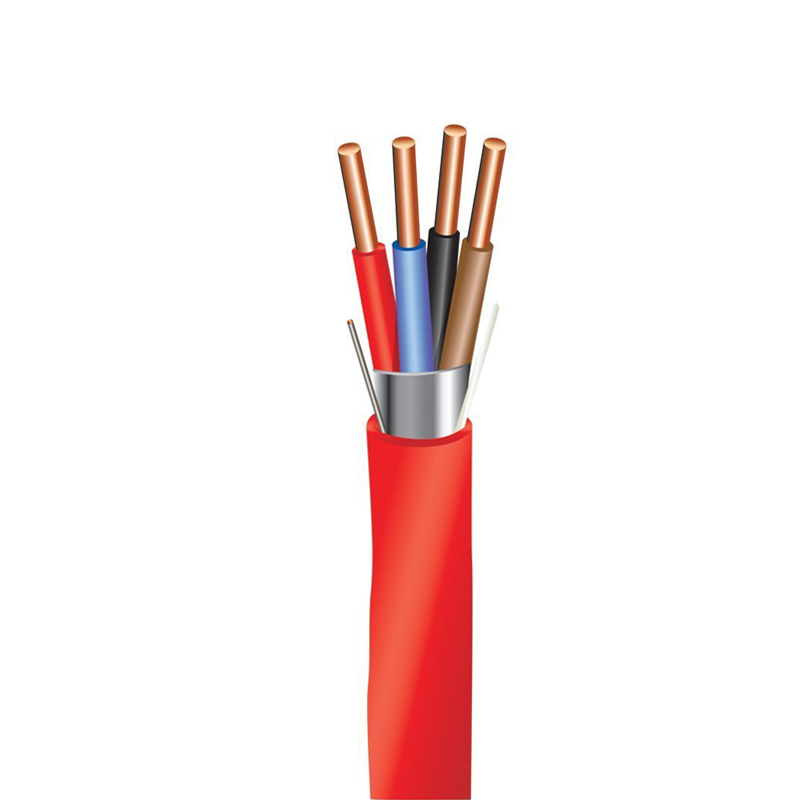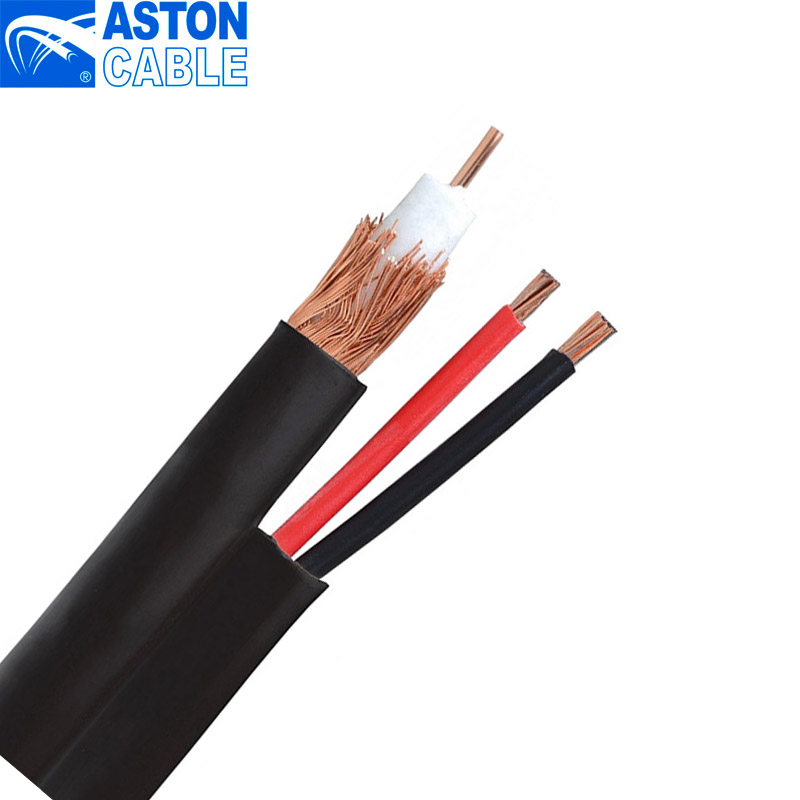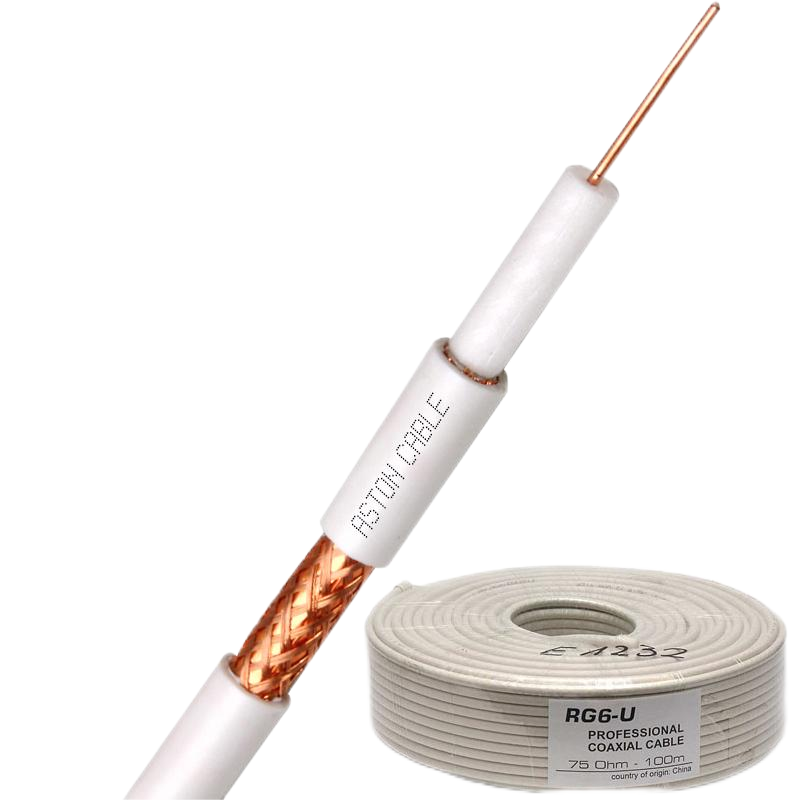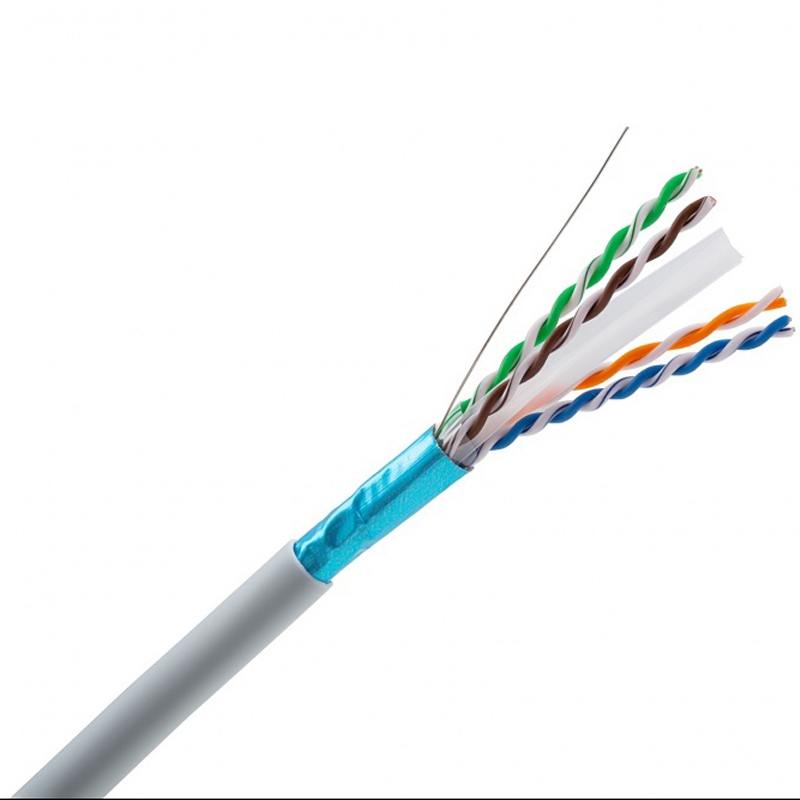Product Main Parameters
| Parameter | Details |
|---|---|
| Central Conductor | 1.02mm 18AWG Bare Copper |
| Shielding | 95% Braid Coverage |
| Outer Jacket | PVC, LSZH, or Black PE |
| Impedance | 75 Ohms |
| Weight | 6.0KG/100m |
| Color | Customized |
Common Product Specifications
| Specification | Details |
|---|---|
| Type | RG59U with Power Cable |
| Daily Output | 200KM |
| MOQ | 30KM |
| Supply Ability | 25000KM/Year |
Product Manufacturing Process
RG59U coaxial cables are crafted with precision to meet stringent standards required for quality signal transmission. According to research and industry standards, the manufacturing process begins with the formation of the central conductor, typically 100% bare copper, which is crucial for signal integrity. High-speed braiding machines then meticulously apply the shielding layer, typically made of high-density braided wire for optimal EMI protection. This is followed by extrusion, where the dielectric insulator is uniformly applied to maintain the necessary spacing between the conductor and shield, ensuring consistent electrical characteristics. The final step involves the application of a robust outer jacket to protect against physical and environmental damage. As concluded in authoritative studies, such thorough manufacturing processes result in cables that effectively mitigate signal loss and electromagnetic interference, making them ideal for professional installations.
Product Application Scenarios
The RG59U coaxial cable is predominantly used in settings where moderate bandwidth and distance are required. Most notably, it is well-suited for CCTV installations, as its specifications align perfectly with the needs of video signal transmission in residential and commercial surveillance systems. Authoritative papers highlight its application in standard-definition broadcast and audio/video installations where its compatibility with BNC connectors offers versatility. Moreover, in environments where short-distance cable runs are prevalent and signal loss is manageable, RG59U serves as an economical choice for cable television connections. Studies also suggest that the limitations of RG59U in bandwidth and distance are well compensated by its affordability and adequate performance in controlled environments.
Product After-Sales Service
Our commitment to customer satisfaction extends beyond the purchase. Aston, as a manufacturer of RG59U coaxial cables, provides comprehensive after-sales support including technical assistance, installation guidance, and a flexible return policy. Customers can reach our support team through various channels to ensure smooth operations of their cable applications.
Product Transportation
We ensure safe and efficient transportation of our RG59U cables by adhering to international packaging standards. Each cable is carefully packed in coil reels, plastic drums, or wooden drums, depending on customer specifications and order quantity, to ensure maximum protection during transit.
Product Advantages
- Reliable Signal Transmission: As a leading RG59U coax manufacturer, Aston provides cables that minimize signal loss and electromagnetic interference.
- Cost-Effective: RG59U is a budget-friendly alternative for applications not requiring high bandwidth or long-distance transmission.
- Versatile Applications: Ideal for CCTV, broadcast, and standard AV connections.
- Durable Construction: Features a protective outer jacket to withstand physical and environmental elements.
- Customizable: Available in various jacket materials and colors to suit specific needs.
Product FAQ
- What is the maximum length for RG59U coax? The manufacturer recommends a maximum length of 750 feet to maintain signal integrity for video signals.
- Is RG59U suitable for HD video? RG59U is not recommended for high-definition video; RG6 is a better option for such applications.
- Can RG59U be used outdoors? Yes, with the appropriate outer jacket, RG59U can be installed outdoors under controlled conditions.
- What connectors are compatible with RG59U? RG59U is compatible with BNC connectors, commonly used in CCTV and AV setups.
- How does RG59U differ from RG6? RG59U has higher attenuation and is suited to shorter runs, while RG6 offers better performance over longer distances.
- Is the cable shielded? Yes, RG59U includes a high-density braided shield to prevent interference.
- What is the cable's impedance? The cable has a standard impedance of 75 ohms, typical for video applications.
- Do you offer custom colors? Yes, as a manufacturer, we provide customizable colors and jacket options.
- What is the warranty period? Our RG59U cables come with a one-year manufacturer warranty against defects.
- Can I order in bulk? Yes, bulk orders are welcome, and we offer competitive pricing for large quantities.
Product Hot Topics
- RG59U Coaxial Cable vs. RG6: Which Should You Choose?
When selecting between RG59U and RG6 coaxial cables, several factors come into play, including intended application, distance, and budget. RG59U is a tried and tested choice for short-range video transmission, often favored for its cost-effectiveness and sufficient performance in CCTV and standard AV scenarios. However, for installations involving high-definition signals or longer distances, RG6 is recommended for its superior performance and lower attenuation. As an RG59U coax manufacturer, Aston provides high-quality cables that meet industry standards but acknowledges the need for higher-rated alternatives in demanding applications.
- The Evolution of Coaxial Cables: From RG59U to Modern Alternatives
Coaxial cables have seen significant advancements in materials and design since the introduction of RG59U. While RG59U remains relevant for specific use cases, technology has driven the development of cables like RG6 and beyond, catering to the increasing demands of digital and high-definition transmissions. These modern cables offer greater bandwidth and enhanced shielding capabilities, allowing them to handle complex signal requirements. Nonetheless, the continued production and use of RG59U coax cables by established manufacturers underline their enduring reliability where their specifications align with project needs. The evolving landscape of coaxial cables is a testament to the balance manufacturers strike between innovation and legacy applications.
Image Description
